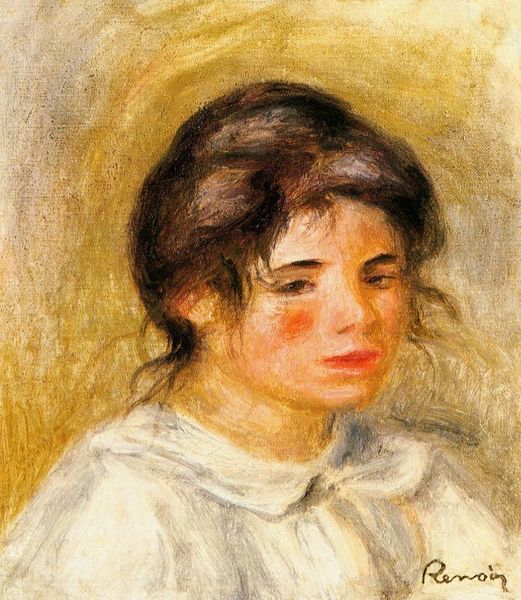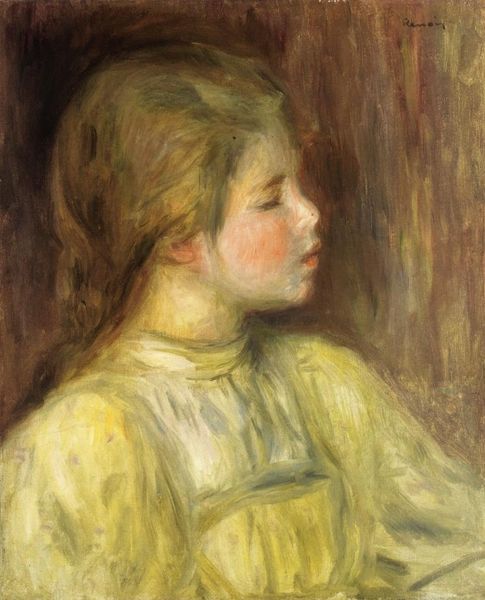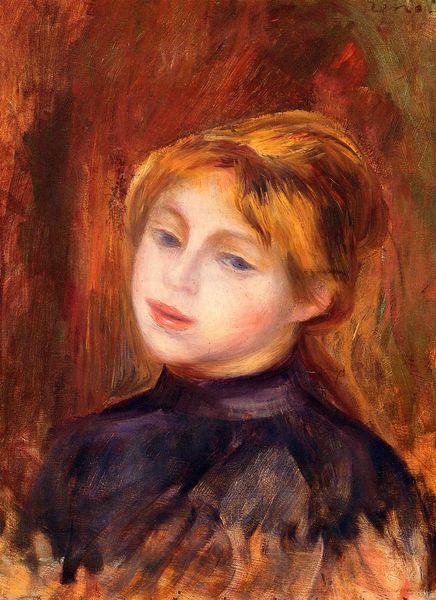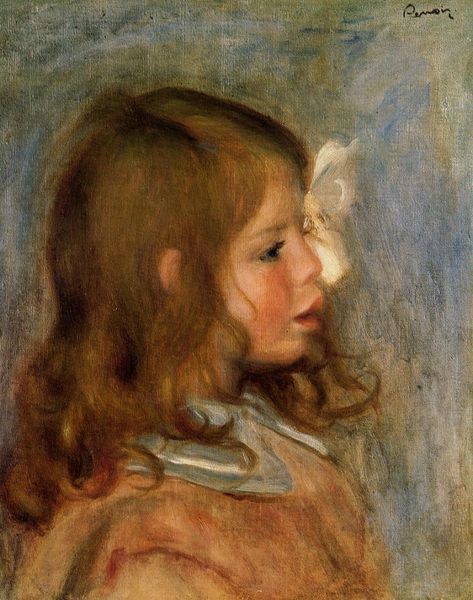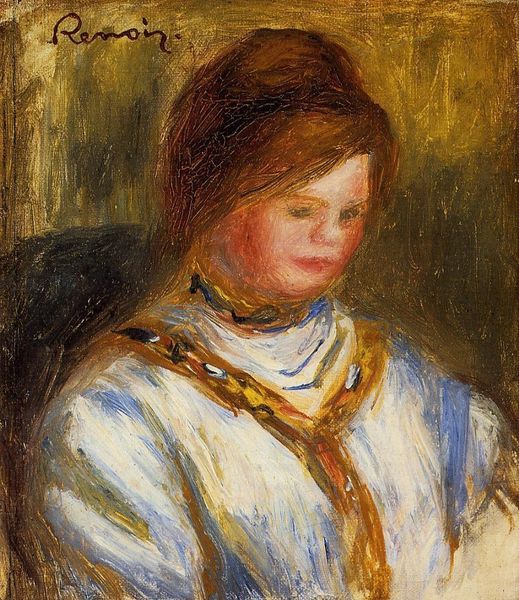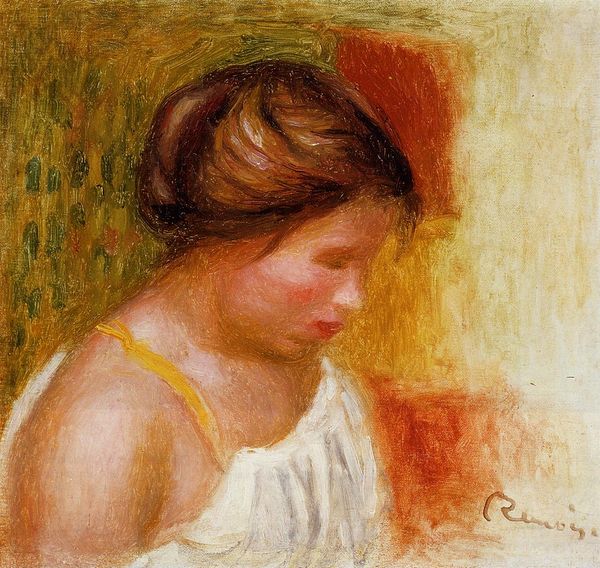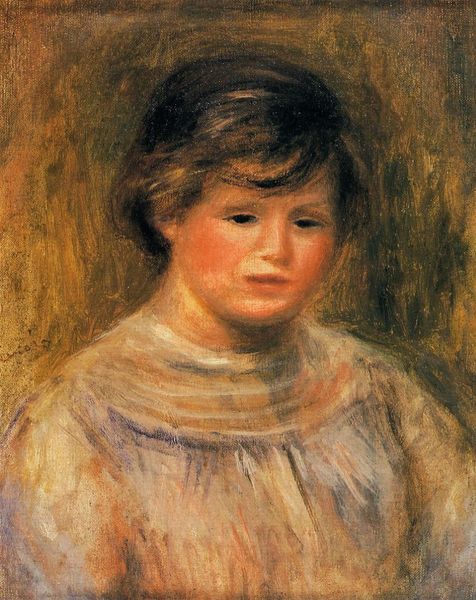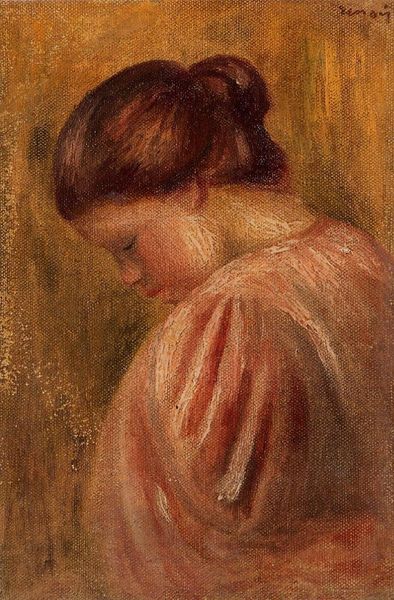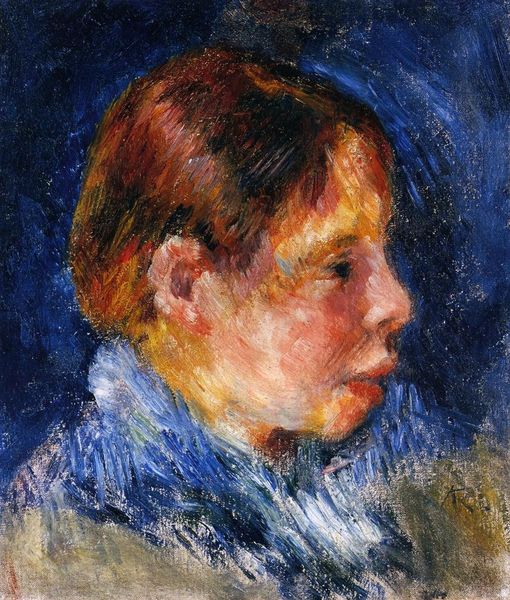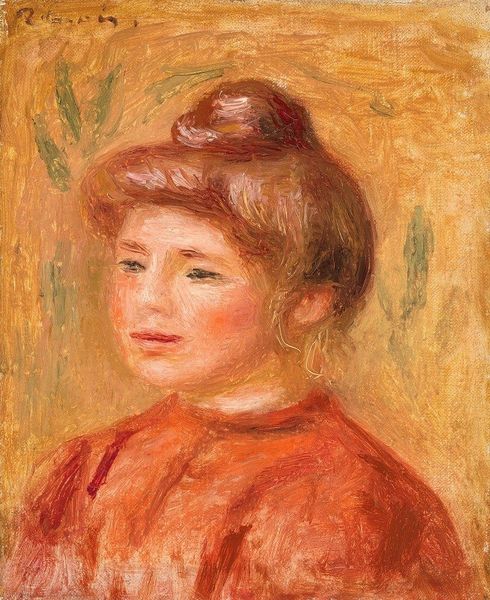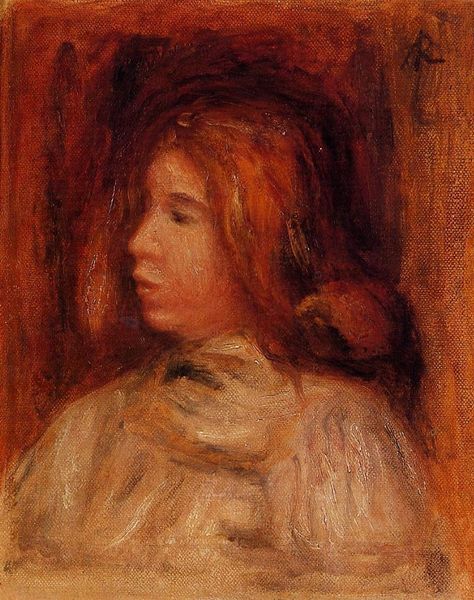
oil-paint, impasto
#
portrait
#
narrative-art
#
oil-paint
#
figuration
#
oil painting
#
impasto
#
expressionism
#
portrait drawing
#
post-impressionism
#
modernism
Copyright: Public domain
Curator: Immediately, I'm struck by the intensity, the raw honesty of this face. It's a profile, yes, but it's more than just a likeness; there’s an inner turmoil reflected. Editor: That's exactly the sensation I get too. We’re looking at Henri de Toulouse-Lautrec’s "Woman’s Head" painted in 1899 using oil paint. It's currently held in a private collection, but its impact remains profound. What is this inner life the woman presents, and why now? Curator: Think of the archetypal woman through art history—the Madonna, Venus… usually ideals, often serene. But here, the woman is simply *being*, contemplating something heavy. The warm tones, browns and ochres, act as a cloak, both comforting and concealing. Editor: Concealing perhaps from societal expectations, the demands placed upon women, particularly within the class and gender constraints of the era. Is Lautrec showing a glimpse into a resistant subjectivity? A fight with destiny? This piece seems so clearly to sit inside Post-Impressionism's emphasis on capturing subjective and personal experience over strict optical realism. Curator: Indeed. There is a tangible psychological depth being depicted through these impressionistic strokes. Look at the use of impasto, especially around her neck and shoulders; the density almost anchors her to the earthly realm, while the loose brushstrokes around the head suggest the intangible realm of thoughts and emotions. It becomes an almost physical representation of a mental state. The use of light gives importance to an idea. Editor: Lautrec's paintings of this type also have this tension: how do we claim space, dignity, humanity in an oppressive culture? I note in his Moulin Rouge paintings, so many people, especially sex workers and others on the social margins, meet his gaze. Curator: Precisely, which brings me back to the symbols… There’s a palpable sense of a search, of inward discovery, the potential that comes from accepting the darkness as well as the light within. We can reflect these paintings in ourselves today. Editor: Thinking about "Woman’s Head," I’m left with a renewed appreciation for art’s power to challenge norms and champion overlooked stories, particularly through its visual commentary on identity. Curator: Absolutely. It’s a reminder that true strength lies not in conforming to an ideal, but in embracing our full selves. The emotional intensity in a piece like this also lets the work become a timeless touchstone.
Comments
No comments
Be the first to comment and join the conversation on the ultimate creative platform.
